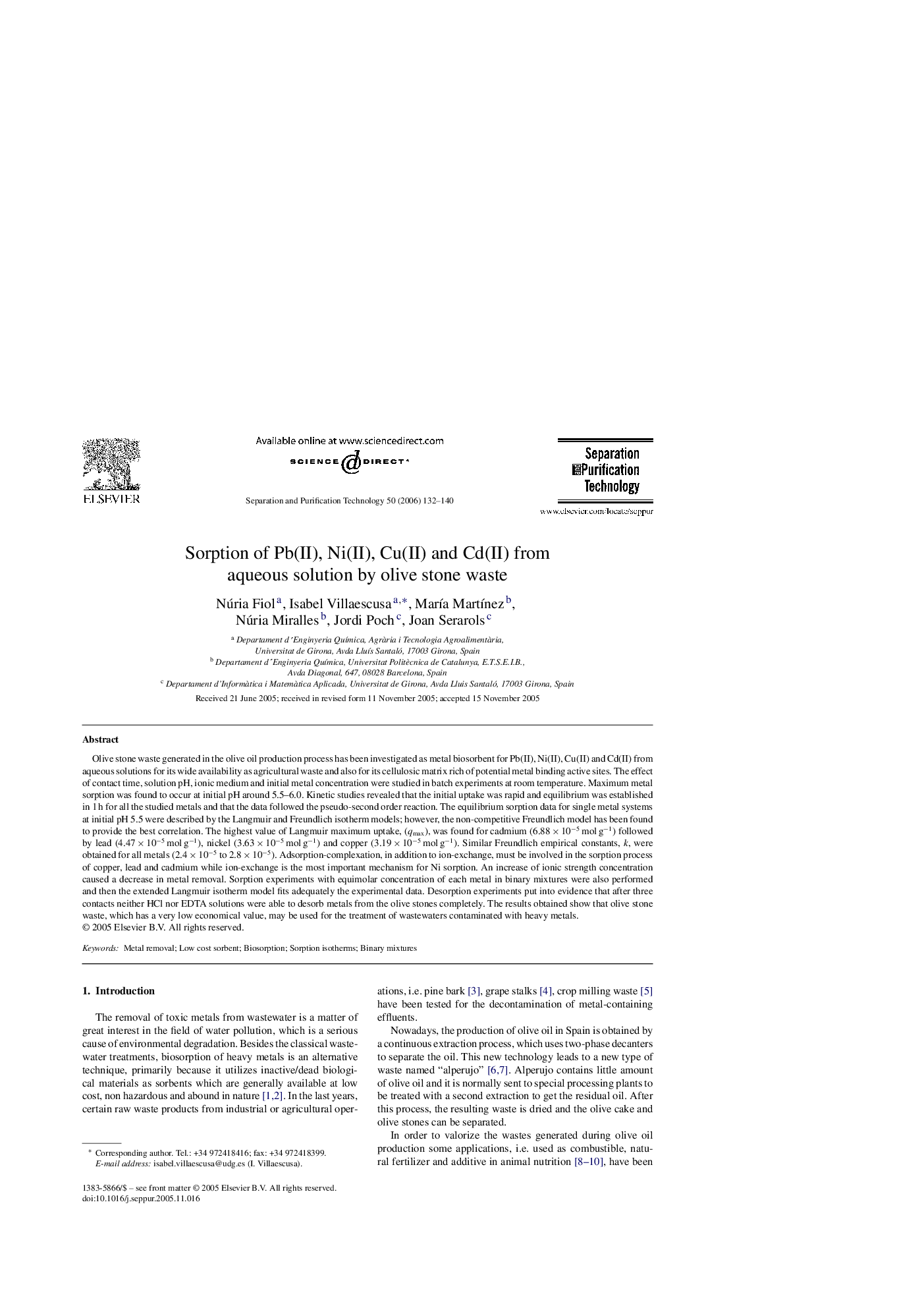| کد مقاله | کد نشریه | سال انتشار | مقاله انگلیسی | نسخه تمام متن |
|---|---|---|---|---|
| 644238 | 884424 | 2006 | 9 صفحه PDF | دانلود رایگان |

Olive stone waste generated in the olive oil production process has been investigated as metal biosorbent for Pb(II), Ni(II), Cu(II) and Cd(II) from aqueous solutions for its wide availability as agricultural waste and also for its cellulosic matrix rich of potential metal binding active sites. The effect of contact time, solution pH, ionic medium and initial metal concentration were studied in batch experiments at room temperature. Maximum metal sorption was found to occur at initial pH around 5.5–6.0. Kinetic studies revealed that the initial uptake was rapid and equilibrium was established in 1 h for all the studied metals and that the data followed the pseudo-second order reaction. The equilibrium sorption data for single metal systems at initial pH 5.5 were described by the Langmuir and Freundlich isotherm models; however, the non-competitive Freundlich model has been found to provide the best correlation. The highest value of Langmuir maximum uptake, (qmax), was found for cadmium (6.88 × 10−5 mol g−1) followed by lead (4.47 × 10−5 mol g−1), nickel (3.63 × 10−5 mol g−1) and copper (3.19 × 10−5 mol g−1). Similar Freundlich empirical constants, k, were obtained for all metals (2.4 × 10−5 to 2.8 × 10−5). Adsorption-complexation, in addition to ion-exchange, must be involved in the sorption process of copper, lead and cadmium while ion-exchange is the most important mechanism for Ni sorption. An increase of ionic strength concentration caused a decrease in metal removal. Sorption experiments with equimolar concentration of each metal in binary mixtures were also performed and then the extended Langmuir isotherm model fits adequately the experimental data. Desorption experiments put into evidence that after three contacts neither HCl nor EDTA solutions were able to desorb metals from the olive stones completely. The results obtained show that olive stone waste, which has a very low economical value, may be used for the treatment of wastewaters contaminated with heavy metals.
Journal: Separation and Purification Technology - Volume 50, Issue 1, June 2006, Pages 132–140